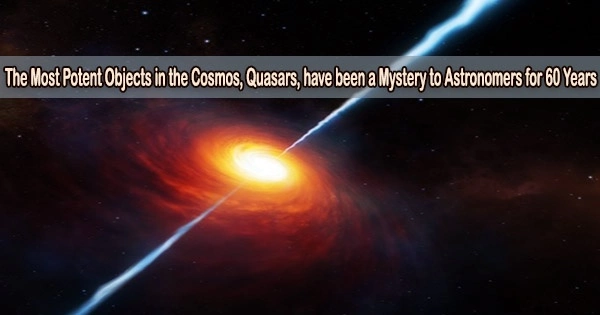By learning that galaxies merging is what ignites quasars, the brightest, most potent objects in the universe, scientists have solved one of their greatest riddles.
Quasars, which were first identified 60 years ago, have the brightness of a trillion stars concentrated into an area the size of our solar system. Since they were originally noticed, it has been a mystery as to what may have caused such intense activity. It has just been discovered that it is a result of galaxies colliding together, according to new research led by experts at the Universities of Sheffield and Hertfordshire.
The work is published in Monthly Notices of the Royal Astronomical Society.
Researchers used deep imaging data from the Isaac Newton Telescope in La Palma to find the collisions after noticing deformed patterns in the quasar-hosting galaxies’ outer regions.
Most galaxies have supermassive black holes at their centers. They also have significant gas contents, but the majority of the time this gas is orbiting far from the galaxy cores, away from the black holes.
The black hole at the heart of the galaxy is drawn into the gas by collisions between galaxies; just before the gas is sucked into the black hole, it releases enormous amounts of energy in the form of radiation, giving the quasar its distinctive brilliance.
It’s an area that scientists around the world are keen to learn more about one of the main scientific motivations for NASA’s James Webb Space Telescope was to study the earliest galaxies in the universe, and Webb is capable of detecting light from even the most distant quasars, emitted nearly 13 billion years ago. Quasars play a key role in our understanding of the history of the universe, and possibly also the future of the Milky Way.
Dr. Jonny Pierce
The emergence of a quasar can have drastic effects on entire galaxies; it can expel the galaxy’s remaining gas, preventing it from producing new stars for billions of years.
This is the first time a sample of this size of quasars has been observed at this sensitivity level. Researchers came to the conclusion that galaxies hosting quasars are around three times as likely to be interacting or colliding with other galaxies by comparing views of 48 quasars and their host galaxies with pictures of over 100 non-quasar galaxies.
The study has provided a significant step forward in our understanding of how these powerful objects are triggered and fueled.
Professor Clive Tadhunter, from the University of Sheffield’s Department of Physics and Astronomy, said, “Quasars are one of the most extreme phenomena in the universe, and what we see is likely to represent the future of our own Milky Way galaxy when it collides with the Andromeda galaxy in about five billion years.”
“It’s exciting to observe these events and finally understand why they occur but thankfully Earth won’t be anywhere near one of these apocalyptic episodes for quite some time.”
Quasars are significant to astronomers because, because of their brilliance, they shine out at great distances and serve as beacons to the universe’s early eras.
Dr. Jonny Pierce, Post-Doctoral Research Fellow at the University of Hertfordshire, explains, “It’s an area that scientists around the world are keen to learn more about one of the main scientific motivations for NASA’s James Webb Space Telescope was to study the earliest galaxies in the universe, and Webb is capable of detecting light from even the most distant quasars, emitted nearly 13 billion years ago. Quasars play a key role in our understanding of the history of the universe, and possibly also the future of the Milky Way.”
















